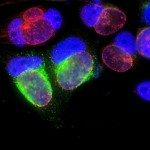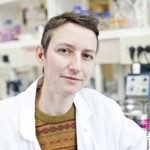Link to Pubmed [PMID] – 24210739
Trends Plant Sci. 2014 Jan;19(1):36-43
Chlamydiae are obligate intracellular bacteria found as symbionts and pathogens in a wide range of eukaryotes, including protists, invertebrates, and vertebrates. It was recently proposed that an ancient chlamydial symbiont facilitated the establishment of primary plastids in a tripartite symbiosis with cyanobacteria and early eukaryotes. In this review, we summarize recent advances in understanding of the lifestyle and the evolutionary history of extant Chlamydiae. We reconstruct and describe key features of the ancient chlamydial symbiont. We propose that it was already adapted to an intracellular lifestyle before the emergence of Archaeplastida, and that several observations are compatible with an essential contribution of Chlamydiae to the evolution of algae and plants.


